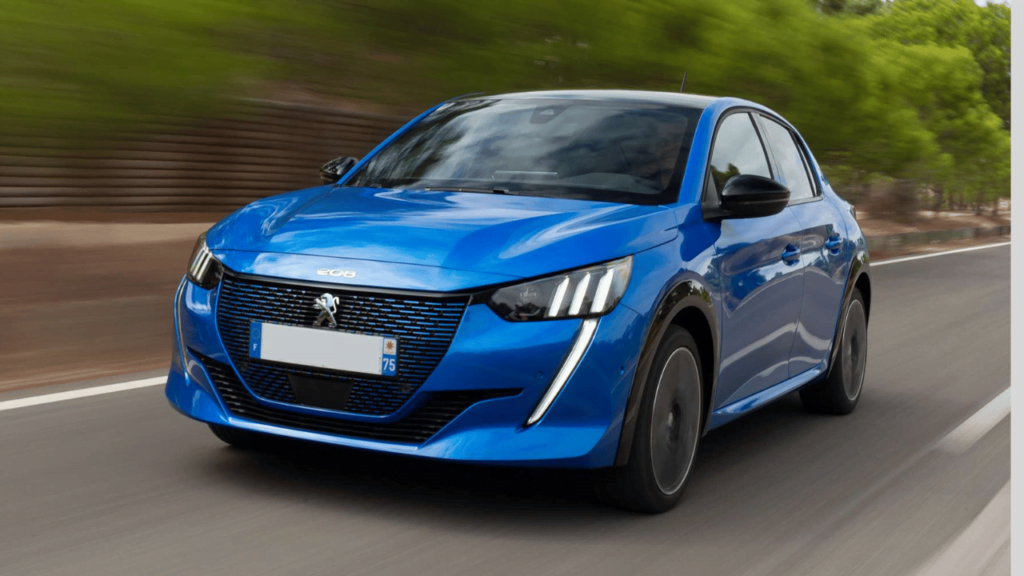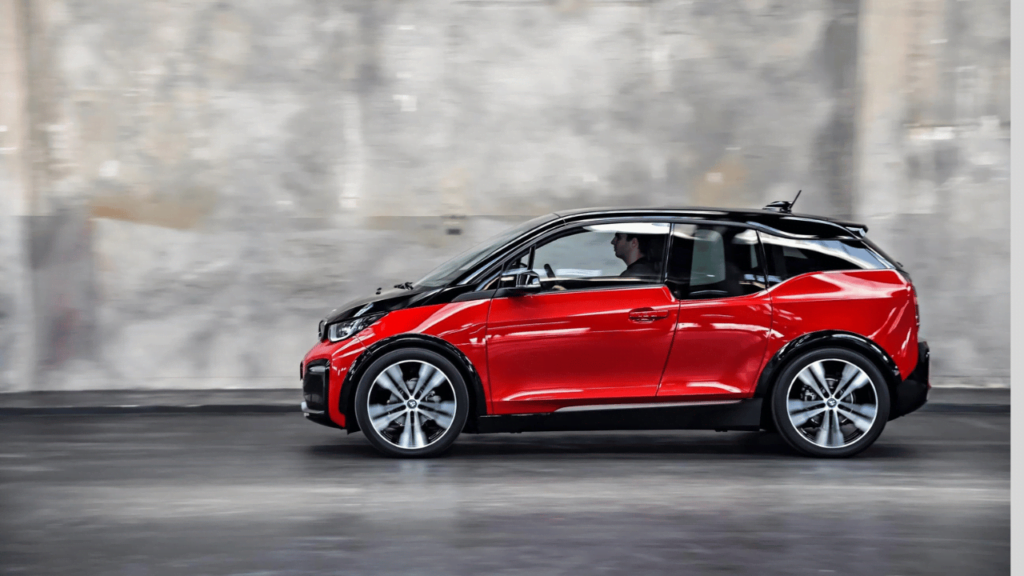The car industry is moving towards greener options, making affordable EVs more available. Now, there are more choices for those who want to save money and help the planet. This piece looks at the best deals on electric cars for buyers today.
In the US, the average new car price is now $48,644, down a bit. Electric cars have seen a big drop in price, falling by 10.8% in January 2023. This makes the average electric car cost about $55,353. The drop is thanks to more cars being made, cheaper models coming out, and big companies like Tesla offering good deals.
The 2023 Chevrolet Bolt EV 1LT is a great choice for those looking for a budget-friendly electric car. It has a good range, easy-to-use infotainment, and lots of room for people and stuff. If you want to save on energy costs, the 2024 Hyundai Ioniq 6 SE Standard Range is a smart pick. It costs $42,715 and is as efficient as the Lucid Air.
Key Takeaways
- Electric vehicle prices have decreased by 10.8% since January 2023
- The 2023 Chevrolet Bolt EV 1LT is currently the most affordable new EV
- Energy-efficient models like the Hyundai Ioniq 6 SE offer long-term cost savings
- EVs in the $30,000 to $40,000 range are becoming more common
- Some models qualify for federal tax credits, further reducing costs
Introduction to Affordable Electric Vehicles
The electric vehicle (EV) market is growing fast, offering more affordable options. Prices range from $30,000 to $40,000. This makes these cars a great choice for those who care about the environment.
The Rise of Budget-Friendly EVs
Back in the early 1900s, electric cars were much pricier than gasoline ones. Now, the market has changed a lot. Manufacturers now offer electric cars that are just as affordable and perform well as traditional cars.
Benefits of Choosing a Low-Cost Electric Car
Choosing an electric car has many perks. They need less maintenance, saving you about 22% compared to gas cars. Plus, you could get a tax credit of up to $7,500, making them even more affordable.
Environmental Impact of Economical Electric Transportation
Electric cars are good for the planet. They don’t emit any pollutants and can go over 130 miles on a single charge. This is important because the U.S. transportation sector uses a lot of energy and oil.
| Vehicle Model | Starting MSRP | Price After Tax Credit | Range (miles) |
|---|---|---|---|
| Nissan Leaf S | $24,390 | $28,140 | 212 |
| Volkswagen ID.4 | $32,325 | $39,735 | 209 |
| Tesla Model Y | $35,490 | $42,990 | 260 |
| Honda Prologue | $39,900 | $47,400 | 296 |
Top 5 Cheapest Electric Cars on the Market
Electric vehicles are getting more affordable, with many wallet-friendly options now available. Let’s look at the top 5 bargain eco-friendly rides that won’t cost a lot.
The 2025 Nissan Leaf EV is the most budget-friendly, starting at $28,140. It has a range of 149-212 miles and gets a $3,750 federal tax credit. Next is the 2023 Mini Cooper SE, priced at $30,900 with a 114-mile range.
The 2024 Hyundai Kona Electric is great for those wanting more range, starting at $32,675. It can go 200-261 miles on one charge. The stylish 2024 Fiat 500e, priced at $34,095, offers a 162-mile range. Last, the 2024 Volkswagen ID.4 starts at $39,735 and has a range of 206-291 miles.
“These thrifty green cars offer a range of options for eco-conscious consumers looking to make the switch to electric without breaking the bank,” says an industry expert.
When looking at these wallet-friendly plug-in vehicles, consider efficiency, operating costs, and available upgrades. Let’s compare these bargain eco-friendly rides:
| Model | Starting Price | Range (miles) | Federal Tax Credit |
|---|---|---|---|
| 2025 Nissan Leaf EV | $28,140 | 149-212 | $3,750 |
| 2023 Mini Cooper SE | $30,900 | 114 | Not eligible |
| 2024 Hyundai Kona Electric | $32,675 | 200-261 | Not eligible |
| 2024 Fiat 500e | $34,095 | 162 | Not eligible |
| 2024 Volkswagen ID.4 | $39,735 | 206-291 | $7,500 |
These thrifty green cars show how electric vehicles are becoming more accessible. Their prices are well below the average new EV price of $55,353 in the US.
Factors Influencing Electric Car Pricing
The price of electric cars depends on several key factors. Knowing these can help buyers find good deals on EVs. It makes it easier to choose from inexpensive electric cars.
Battery Technology and Costs
Battery technology is key to EV prices. Bigger batteries cost more but give you a longer range. For instance, the Lucid Air has a 516-mile range thanks to its high-capacity battery. The Mini Cooper SE, on the other hand, has a 110-mile range with a smaller battery.
This difference in battery size greatly affects the car’s price.
Government Incentives and Rebates
Government support can lower EV prices a lot. The light-duty EV tax credit has been extended until 2032, saving consumers a lot of money. Also, the Infrastructure and Jobs Act has set aside $7.5 billion for a nationwide charging network.
This makes owning an EV more appealing and easier to do.
Manufacturing Scale and Competition
As more cars are made, prices usually go down. Tesla, making about 1.8 million cars a year, has cut prices on its Model 3 in 2023. This trend is likely to keep going as more companies start making EVs.
| Factor | Impact on EV Pricing |
|---|---|
| Battery Size | Larger batteries increase cost but provide longer range |
| Government Incentives | Can reduce prices by thousands of dollars |
| Manufacturing Scale | Larger production volumes lead to lower prices |
As the EV market grows, these factors will keep shaping the prices of electric cars. This makes economical EVs more available to more people.
Cheapest Electric Car: A Detailed Look
The search for the best value in electric cars has led to a boom in affordable plug-in cars. The Chevrolet Bolt EV LT is a standout with a starting price of $27,495. It offers great range and features, perfect for those on a budget.
In Europe, the Dacia Spring is the cheapest electric car. It costs €12,500 for French buyers with government grants. This car focuses on being simple and affordable.
| Model | Starting MSRP | Key Features |
|---|---|---|
| Nissan Leaf S | $29,135 | Established model, good city range |
| Mini Cooper SE Hardtop | $30,895 | Sporty handling, iconic design |
| Hyundai Kona Electric SE | $34,885 | Long range, spacious interior |
| Volkswagen ID.4 Standard | $40,290 | Roomy SUV, smooth ride |
| Toyota bZ4X | $42,000 | Up to 242 miles range, fast charging |
These affordable plug-in cars have a variety of features and capabilities. They meet different needs and preferences. The competition in the electric car market is driving innovation and making electric vehicles more affordable for everyone.
Comparing Running Costs: Electric vs. Gas-Powered Vehicles
Looking at the cost of electric cars is more than just the price tag. Let’s explore how electric vehicles compare to traditional gas cars in terms of ongoing expenses.
Charging Costs vs. Fuel Costs
Electric cars save a lot on fuel costs. EV owners spend about 60% less on charging each year than gas car owners do on fuel. The yearly fuel cost for an electric car is $485, while gas cars cost $1,117.
Maintenance Expenses
Electric vehicles are also cheaper to maintain. EVs cost half as much to keep in good shape as gas cars do. The yearly maintenance cost for an electric car is $949, compared to $1,279 for gas cars.
Insurance Considerations
Insurance for electric cars can be pricier because of the cost of parts and specialized repairs. For instance, the Chevy Bolt, a budget-friendly electric option, has an average annual insurance cost of $2,007.
| Cost Category | Electric Vehicle | Gas-Powered Vehicle |
|---|---|---|
| Annual Fuel/Charging | $485 | $1,117 |
| Annual Maintenance | $949 | $1,279 |
| Efficiency (miles/unit) | 2.6-4.8x more efficient | Baseline |
Even though electric cars might cost a bit more upfront, they save money over time on fuel and maintenance. This makes them a smart choice for many drivers.
Entry-Level Electric Vehicles: Features and Specifications
The market for cost-effective EVs is growing fast. It offers buyers a variety of value electric cars with great features. Let’s look at some reasonably priced electric vehicles that are making a big impact.
The Fiat 500e starts at $34,095 and has a range of about 150 miles. It’s ideal for city driving and is an affordable choice for electric mobility. The Hyundai KONA Electric also stands out in this segment. It has an EPA-estimated range of up to 261 miles for its higher trims.
For those wanting more power, the Volvo EX30 is a great option. Priced around $40,000, its dual-motor version has over 400 horsepower. It can go from 0 to 60 mph in just 3.4 seconds.
| Model | Starting Price | Range | Key Feature |
|---|---|---|---|
| Fiat 500e | $34,095 | 150 miles | Compact city car |
| KONA Electric | $32,675 | Up to 261 miles | Versatile SUV |
| Volvo EX30 | $40,000 | Not specified | High performance |
These electric vehicles offer advanced features like regenerative braking systems and LED daytime running lights. The KONA Electric also has a Surround View Monitor and Blind-Spot View Monitor in its higher trims.
As battery technology gets better and production increases, we’ll see even more affordable options. Volkswagen, Kia, and Tesla plan to release new models in the $25,000 to $30,000 range by 2025-2026. This will expand the market for value electric cars even more.
How to Find the Best Deals on Electric Cars
Finding great deals on economical electric cars is easier than ever. The market for thrifty electric mobility is growing, offering many ways to save on your next EV purchase.
Researching Manufacturer Incentives
Many automakers offer attractive incentives for inexpensive EVs. By August 2024, financing rates were available for 38 electric vehicle models. Some models even offered rates as low as 0%. The 2024 Hyundai IONIQ 5, Kia EV9, and Kia EV6 were among them, offering 0% financing.
Exploring Lease Options
Leasing can be a smart way to get economical electric cars. There were lease offers for 45 EV models, with monthly payments starting as low as $206 for the 2024 Volkswagen ID.4. Other great lease deals included the 2024 Hyundai IONIQ 5 at $236/mo and the 2024 Kia EV6 at $271/mo.
Considering Used Electric Vehicles
Used EVs can offer big savings and still have modern features. The average new electric vehicle price in the US was $55,353 in June 2024, down 10.8% from January 2023. Choosing a used model can make thrifty electric mobility even more accessible.
| Model | Starting Price | Range (miles) |
|---|---|---|
| 2024 Nissan Ariya | $28,140 | 216-304 |
| 2023 Mini Cooper SE | $30,900 | 114 |
| 2024 Hyundai Kona Electric | $32,675 | 200-261 |
| Tesla Model 3 | $38,990 | 272-363 |
EVs need 31% less maintenance and have bills 22% lower than gas-powered cars. This makes them a cost-effective choice in the long run.
The Future of Affordable Electric Mobility
The world of entry-level electric vehicles is changing fast. Volkswagen Group is at the forefront with plans to launch budget electric cars around €20,000 by 2027. This move could make electric cars more accessible to everyone, changing the electric vehicle market.
By late 2025, Volkswagen’s “Electric Urban Car Family” will introduce four new models under €25,000. This includes two compact cars and two small SUVs, all made in Spain. The focus is on being affordable yet still offering top technology, design, and quality.
Volkswagen’s plan goes beyond just making cars. They aim to produce them in Europe, supporting local industries and cutting down on carbon emissions. This supports the growing need for green mobility solutions.
| Year | Milestone | Price Range |
|---|---|---|
| 2025 | Launch of Electric Urban Car Family | Under €25,000 |
| 2027 | World Premiere of Entry-Level EVs | Approximately €20,000 |
These plans suggest a bright future for affordable electric mobility. With big names like Volkswagen focusing on budget-friendly options, electric cars could soon be a top choice for more people. This could speed up the shift to sustainable transport.
Pros and Cons of Buying a Budget Electric Car
Budget-friendly electric cars are becoming more popular as people look for affordable electric cars. Let’s look at the good and bad points of these cars to help you decide.
Advantages of Low-Cost EVs
Choosing a budget-friendly electric car has many benefits:
- Lower operating costs: EVs are cheaper to run, with electricity costing about 17 cents per kWh. This is less than the $3.35 per gallon for gas cars.
- Reduced environmental impact: EVs don’t emit pollutants, making the air cleaner.
- Tax incentives: You might get up to $4,000 back in taxes for buying a used EV, based on your income.
Potential Drawbacks to Consider
Even though inexpensive electric cars have their advantages, there are some downsides:
- Limited range: Older EVs often couldn’t go more than 100 miles, but newer ones do better.
- Charging infrastructure: There are only 60,000 charging spots, much fewer than the 145,000 gas stations.
- Upfront costs: Setting up charging at home can cost more than $500 on top of the car’s price.
Making an Informed Decision
Think about these points when looking at low-cost electric cars:
- Daily driving needs: Make sure the EV’s range fits your daily trips.
- Charging options: Look into charging spots near you or think about installing one at home.
- Long-term savings: Compare the costs over time between EVs and gas cars.
| Factor | New EV | Used EV |
|---|---|---|
| Average Price | $52,314 | $31,000 |
| Price Trend | Down 16.2% (Model Y) | Down 31.8% year-over-year |
| Tax Credit | Varies by model | Up to $4,000 |
With EV sales going up and prices falling, now could be a great time to look at an affordable electric car for your next buy.
Conclusion
The world of economical EVs is changing fast, making electric cars cheaper than ever. Battery costs are going down, and more cars are being made. This means electric vehicles are becoming more affordable.
The cost of a new EV fell by almost $15,000 in just a year. This shows how serious the industry is about making electric driving affordable.
Driving an electric car saves a lot of money. EV owners spend 40-65% less on fuel and save about 40% on car upkeep. The average yearly cost for electricity is $485, compared to $1,117 for gasoline. This means big savings over time.
Government support is also helping EVs become more popular. A $7.5 billion investment in charging stations and big tax breaks are making electric cars more appealing. The U.S. is leading the way in EV production with $312 billion in investments. This means a bright future for affordable, green transportation.
The rise of economical EVs is more than a trend. It’s a big change that will make electric driving affordable for millions of Americans.












